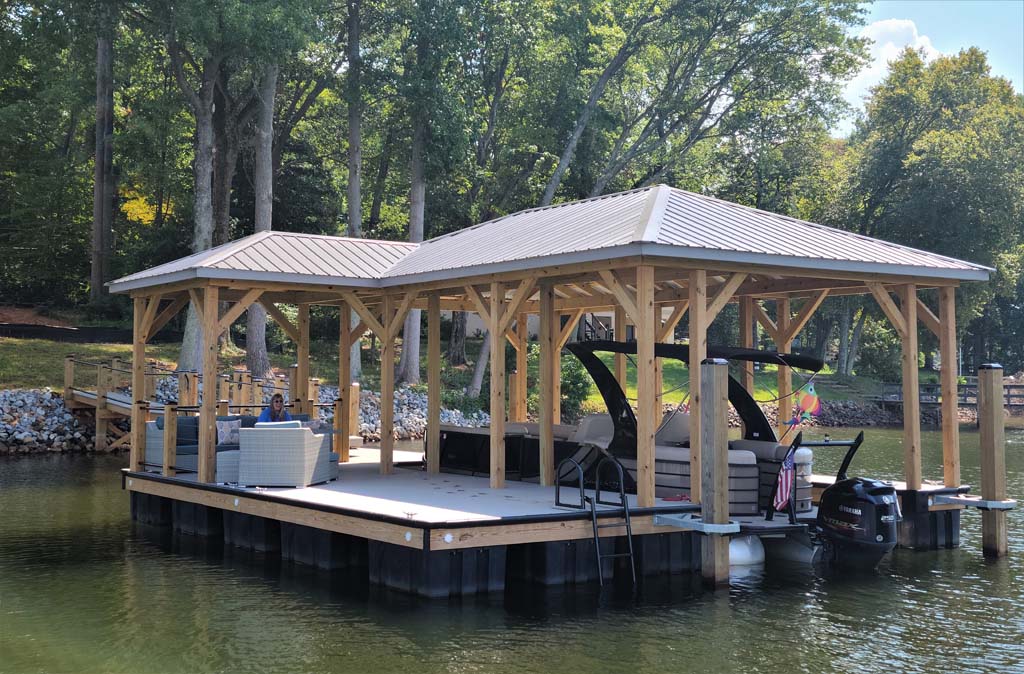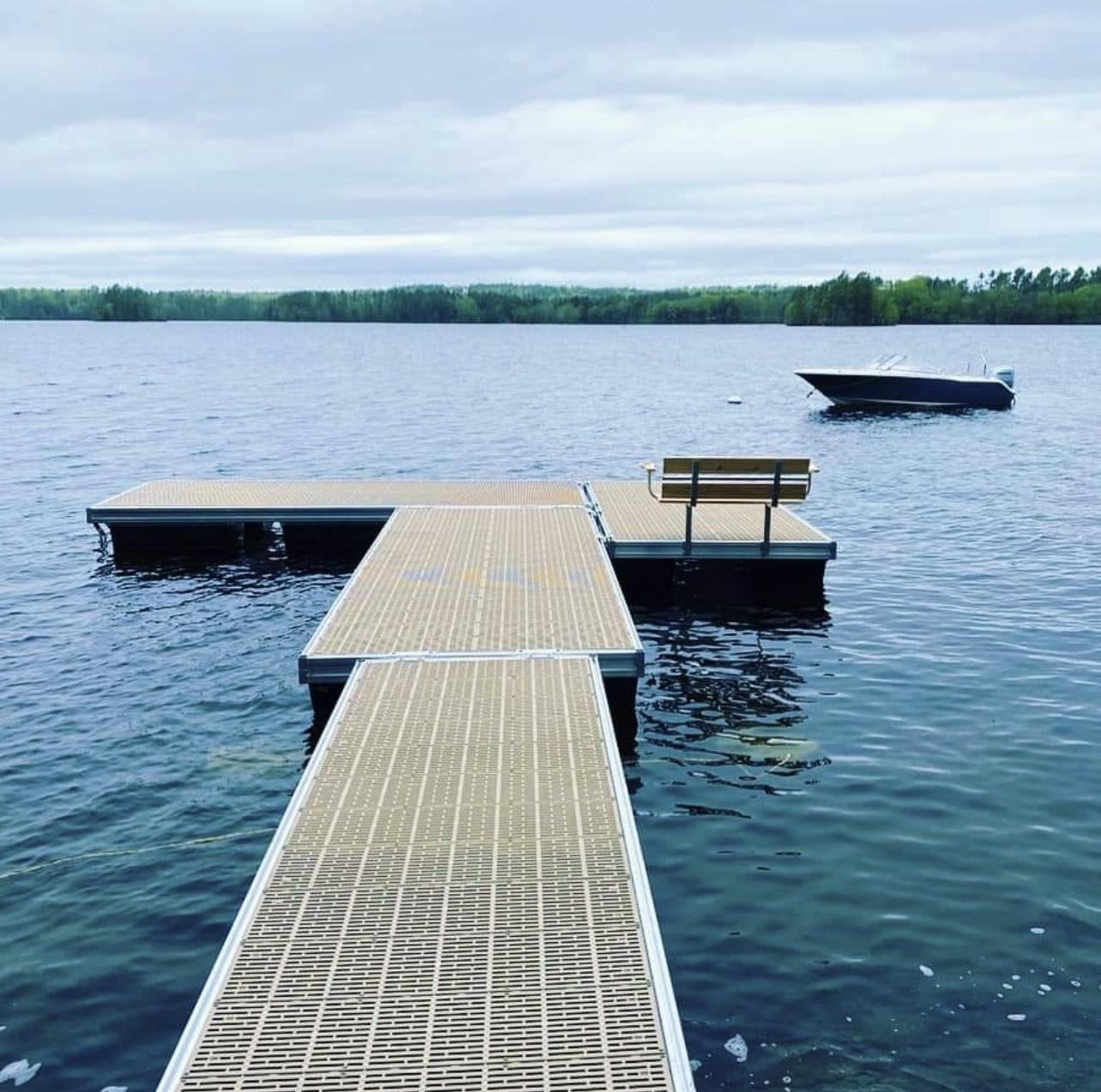Exactly How Floating Dock Company Expertise Can Elevate Your Waterfront Experience
Exactly How Floating Dock Company Expertise Can Elevate Your Waterfront Experience
Blog Article
Upgrade Your Waterfront With Resilient Floating Docks
Upgrading your waterside with sturdy floating docks can considerably improve both functionality and aesthetics, giving a flexible solution for various water activities. These frameworks are designed to adjust to changing water degrees, making sure safety and access throughout the seasons. With an array of materials readily available, including low-maintenance alternatives and conventional timber, choosing the appropriate dock can match your individual style and satisfy practical requirements. Nevertheless, understanding the nuances of installment and maintenance is critical for guaranteeing long life and performance. When making this investment?, what elements should you take into consideration.
Advantages of Floating Docks
Floating docks offer a multitude of benefits that improve their appeal for numerous maritime applications. Unlike standard fixed docks, floating docks rise and loss with the tide, ensuring consistent availability for boats and watercraft regardless of ecological conditions.
In addition, floating docks are easier to relocate and install, offering adaptability for temporary or seasonal use. Their modular style permits modification to fit details demands, whether for exclusive marinas, domestic beachfronts, or industrial applications.
In addition, floating docks develop minimal disturbance to the water setting, preserving regional ecosystems and decreasing the probability of disintegration. They also offer boosted safety and security and stability for users, as their buoyant nature uses an extra forgiving surface than rigid structures.
Moreover, floating docks can promote a diverse variety of activities, such as fishing, swimming, and leisure boating, making them a useful property for beachfront development. Their flexibility and functionality make floating docks a favored option for a range of marine jobs.
Selecting the Right Products
Choosing proper products for floating docks is important to their longevity, performance, and overall effectiveness. When choosing materials, consider factors such as ecological direct exposure, upkeep needs, and architectural stability. Typical materials include timber, plastic, light weight aluminum, and composite alternatives, each offering unique advantages and downsides.
Wood, while aesthetically pleasing, requires normal upkeep to stop rot and decay. Pressure-treated wood can enhance resilience, but it might still catch water damages in time. Plastic floats, often made from high-density polyethylene, are immune to rust and need minimal maintenance, making them an eye-catching option for low-maintenance applications.
Aluminum is an additional feasible option, known for its toughness and lightweight residential properties. It is resistant to corrosion and can stand up to severe climate problems, although it may be a lot more expensive than various other materials. Compound materials combine the very best qualities of timber and plastic, providing a low-maintenance and resilient choice that resembles the appearance of timber without the linked disadvantages.
Ultimately, the option of material must line up with the intended usage, ecological considerations, and budget plan restraints, ensuring a useful and durable floating dock that fulfills your certain requirements.
Installation Process Summary
The effective setup of a drifting dock counts on mindful preparation and execution, making sure that it runs efficiently in its desired setting. The first step entails assessing site problems, consisting of water deepness, shoreline features, and prevailing climate patterns, which will certainly inform the dock design and anchoring system.
Complying with the website analysis, the following stage is to prepare the floating dock components. This includes setting up the structure, safeguarding drifts, and attaching any essential equipment. It is essential to guarantee that all connections are durable and waterproof to stand up to aquatic problems.
As soon as the dock is constructed, the installment procedure starts with placing the dock in the water. This can entail a crane or various other training tools, specifically for bigger frameworks. Appropriate positioning is necessary for performance and security.

Upkeep Tips for Longevity
Normal maintenance is necessary for guaranteeing the long life and ideal efficiency of a floating dock. To accomplish this, begin with routine examinations at least two times a year, focusing on the stability of the dock's framework, including the flotation protection devices and linking equipment. Look for indications of wear, damages, or corrosion, and attend to any kind of issues immediately to protect against further degeneration.
Cleansing is another vital facet of upkeep. Remove debris, algae, and barnacles from the dock's surface to avoid unsafe conditions and maintain aesthetic charm. Make use of a soft brush and a mild detergent to prevent harming the dock's products.
Furthermore, make certain that the dock is correctly anchored and safeguarded to withstand seasonal adjustments in water degrees and climate condition. Inspect the anchoring system for stability and make modifications as required.
Enhancing Your Exterior Aesthetic
To develop a visually enticing outside room, incorporating a drifting dock can considerably boost the overall visual of your waterfront residential or commercial property. Floating docks are not just functional yet can also offer as a striking focal point that matches the all-natural surroundings - floating dock services. Available in various products and layouts, these docks can be tailored to match your building's architectural style Learn More and landscape
The enhancement of ornamental aspects, such as incorporated lighting or elegant railings, better elevates the dock's visual appeal. Take into consideration making use of natural wood coatings, which mix perfectly with the environment, or choosing contemporary materials like light weight aluminum or composite decking that offer a streamlined, contemporary look.
Purposefully putting planters or seating that site areas on or around the dock can produce inviting rooms that motivate leisure and pleasure of waterfront sights. Additionally, including colors and appearances that balance with your landscape will produce a cohesive visual throughout your outdoor location.

Final Thought

Updating your waterfront with resilient floating docks can dramatically boost both capability and visual appeals, giving a flexible solution for numerous water activities. Unlike standard set docks, floating docks increase and fall with the tide, making sure consistent accessibility for read here boats and watercraft no matter of ecological problems.Selecting proper products for floating docks is crucial to their longevity, efficiency, and overall performance.Once the dock is assembled, the installment process begins with positioning the dock in the water.In summary, floating docks offer many benefits, consisting of flexibility to water degree adjustments and a variety of material options.
Report this page